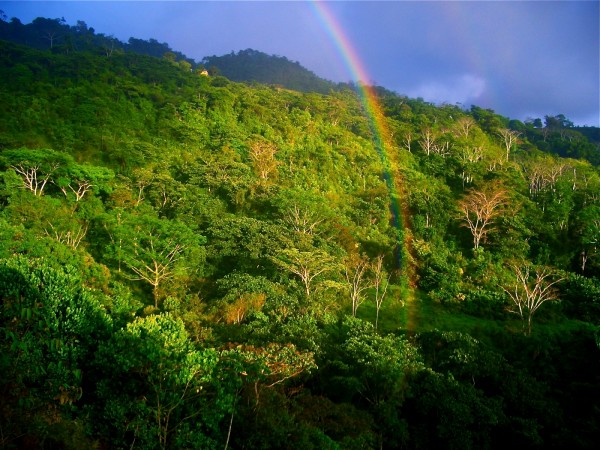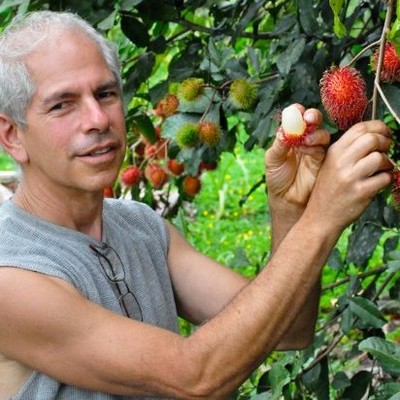
Nestled within the lush Costa Rican landscapes, a health-conscious innovator and horticultural pioneer has been rewriting the rules of farming. Eric Rivkin, founder of the Viva La Raw Project, is sowing the seeds to revolutionize how regional gardeners and orchardists grow food, armed with a local artisan’s rock dust byproduct.
“His family are rock sculptors,” says Rivkin. “They make granite, lava and limestone sinks and tubs and tiles. They’re cutting all day long, generating piles of rock dust. They didn’t know where to put it. They had filled their whole backyard up with it, and they had no more room to store inventory.”
Fortunately, one family’s trash is another man’s treasure. Rivkin arranged to free the artisan from this piling rock dust for use as a powerful and entirely natural soil amendment. For the artisan, this arrangement has let him expand his workshop, allowing his family business to sculpt more efficiently. For Rivkin, his Viva La Raw project gained an edge in producing large, delicious and nutritious fruits and vegetables — through locally-sourced rock dust.
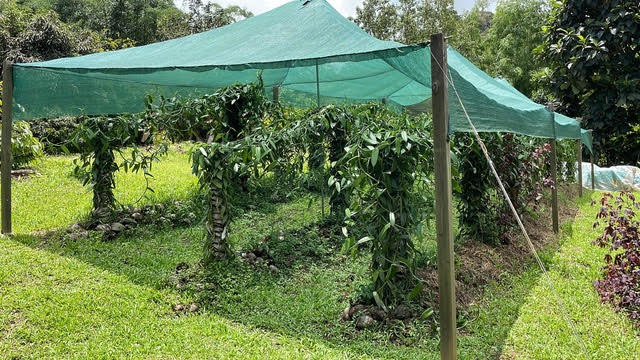
“I hit the jackpot. When I started putting it on my jackfruit, durian and pineapples, they just skyrocketed in size, quality and flavor,” he said, adding that his farm had the country’s largest durian (five kilos) after two years of applying rock dust around the tree dripline. For pineapples, he applied one tablespoon to every single pineapple plant, and the result was 100% yield increases. “Every single one turned into a beautiful pineapple, and the tastiest ever.”
Remineralization aligns perfectly with Viva La Raw — a holistic educational project and community Rivkin founded to advocate for sustainable living, plant-based nutrition, as well as a deeper connection to nature within the heart of Costa Rica’s rainforest.
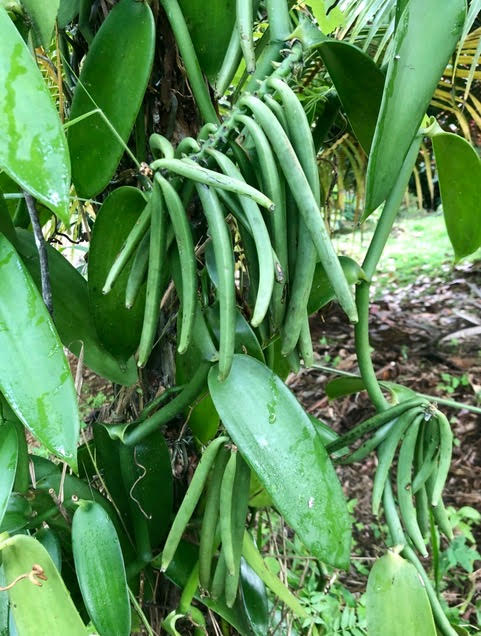
The community adheres to a living foods raw vegan diet, focusing on nutrient-rich, fresh and unprocessed foods. While striving for self-sufficiency in food production, Viva La Raw also engages with local markets, sharing surplus with neighbors. The founder said: “This isn’t a registered corporation. I wouldn’t name it as a so-called ‘business.’ I would call it more of a nonprofit mission.”
Rivkin’s rock dust journey began roughly two decades ago when he discovered the writings of Don Weaver from Remineralize the Earth, and the potential of remineralization to transform landscapes. Flash forward to today, and this approach has not only boosted Rivkin’s own crop yields, but it is reshaping the way his tropical compadres think about their sustainable agricultural practices.
“I’ve been selling it to all my neighbors and friends. Almost everyone has been putting it in their gardens all over here. They’re all demanding it. Some are even putting in 1,000 pounds per farm in bags weighing 100 pounds each.”
A second business
Deep within Central America, Rivkin has found a way to beautify gardens and foster community growth. He sells a range of remineralization products in various sizes, from one-kilo to 50-kilo sacks. For the artisan producing the rock dust, Rivkin added, this enterprise represents a valuable second business.
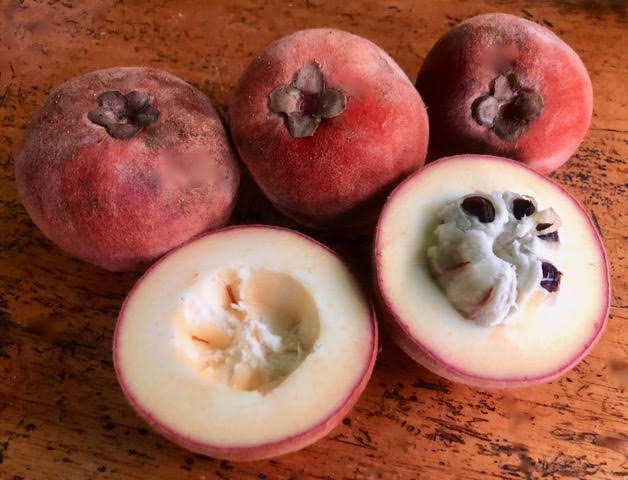
Rivkin explains, “I’m his sole distributor to the public. He doesn’t have time to have all my hundreds of friends go visit him.” Every week, at the farmers’ market, Rivkin takes large rock dust orders. His aim is to make it accessible for ‘green’ enthusiasts with sprawling gardens. He also offers advice on gardening in the tropical climate, utilizing the rock dust. The results are astonishing, with brighter growth, reduced pests, and enhanced overall plant health. This unique venture nurtures an interconnected community that thrives in nature’s embrace. However, Rivkin’s growth plans are limited.
“There’s not enough rock dust in this one yard to export it. We’d have to contract all the gravestone makers and stonecutters in the country, going around and collecting the stuff, warehousing it, packaging it, and all that stuff. That’s too much work. Right now, it’s nice and local, and it keeps the money at home, and it keeps the investment low.”
He added: “I’m going into town anyway, and I come home with [a load of rock dust] in my truck every week. My workers unload it. It takes five minutes. I stockpile it, label it with application instructions, and provide the Remineralize the Earth’s Rock Dust Primer by request. I sell it when I can to people who are moving into the area. The nice thing is the people who move in are going to have the healthiest orchards and gardens in the world, because the remineralization of the soil is key.”
Testing the rock dust
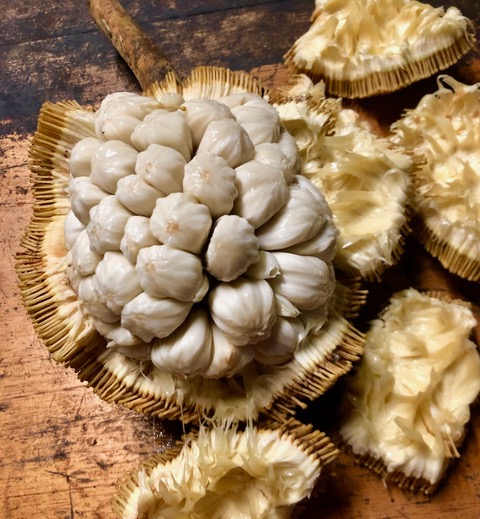
To demonstrate the effectiveness of this rock dust, Rivkin sent samples for laboratory testing. He is eager to receive the results, as his enterprise faces competition from large companies dredging river bottoms for mineral products, but they will contain less effective minerals. In Costa Rica, he suggested, heavy pesticide use and chemical-laden river sediments are common due to the country’s substantial agricultural land in comparison to its small population.
Fortunately, he added, the practice of remineralization, though relatively new, holds great promise for sustainable agriculture. “Remineralizing the soil helps us get that much closer to nature. In other words: What is Nature doing to nurture itself? Basically, the falling of branches and leaves is [the Earth] remineralizing itself every autumn.”
“That’s true all over the world,” he added. “When vegetation falls down and builds up and up and up, whether it’s a prairie or a forest, the minerals all come from leaves falling down, and it builds up. [Remineralization] is a much quicker way to get the minerals back in the soil, and to get the microbiome back where it belongs. We can feed the world a lot faster and more efficiently by having rock dust added to basically every food product.”
According to Rivkin, there is a need for agricultural universities to explore and incorporate remineralization into their curricula, making this a recognized field of study. With rock dust readily available worldwide, this sustainable approach has the potential to revolutionize agriculture, boost food production, and restore damaged ecosystems, all while reducing the reliance on harmful synthetic chemicals.
Viva La Raw backstory
By trade, Rivkin is a designer and inventor. His inventions include a commonly-used bulk food dispenser that can be seen at natural food stores worldwide. He founded Viva La Raw in Minnesota before moving operations to Costa Rica in the mid-2000s. Viva La Raw is an educational project and community initiative centered around sustainable, spiritually-enriching, socially-just, and plant-based nutrition-rich lifestyles.
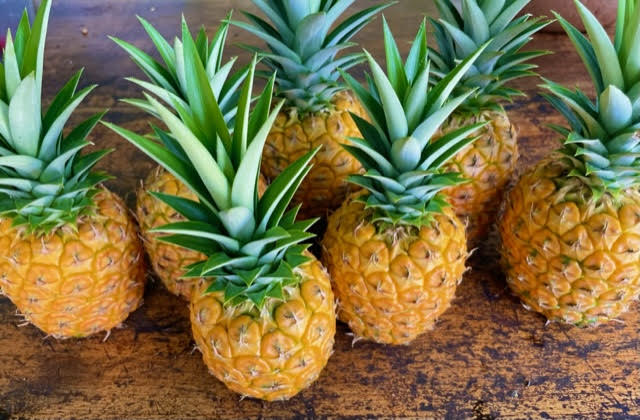
“It was basically something I could use as a platform, whose mission it is to help everyone get healthy through growing their own food and making plant-based diets their main thing. […] That’s my lifelong mission — to be as healthy as you can be.”
Located in Costa Rica’s South Pacific coastal mountains, Viva La Raw operates within the organic permaculture farm known as La Joya del Sol (Jewel of the Sun). The project allows people to engage as internal farm participants, attend sponsored events, visit as guests, or live as ongoing residents, work-traders, or event leaders.
Viva La Raw emphasizes the importance of living by example and making conscious choices that align with sustainability and holistic well-being. The community practices permaculture-based design and land use, utilizes alternative energies and natural water sources, and promotes eco-friendly architecture. Rivkin added: “We have to localize, grow food ourselves, doing things organically and within the laws of nature. The Earth will give back to us.”
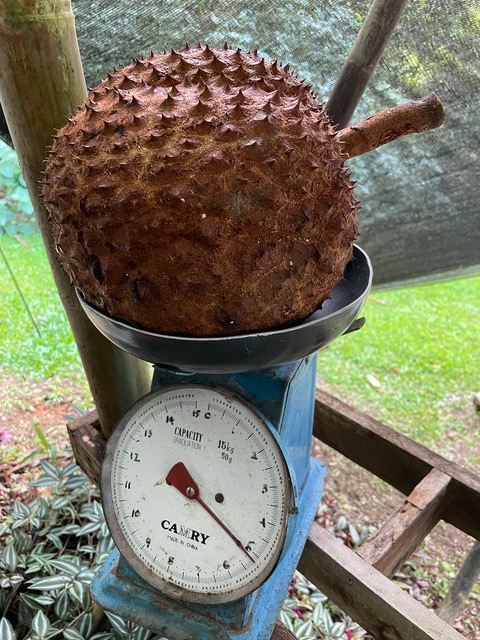
Carter Haydu Carter Haydu is a senior content creator for King Abdullah University of Science and Technology (KAUST) in Saudi Arabia. Since 2012, he also has written about the Canadian energy sector for a Calgary-based trade publication. Carter has been a journalist since 2005, with much of his reporting delving into the environmental issues facing upstream oil and gas. He has written for Remineralize the Earth since 2018.

